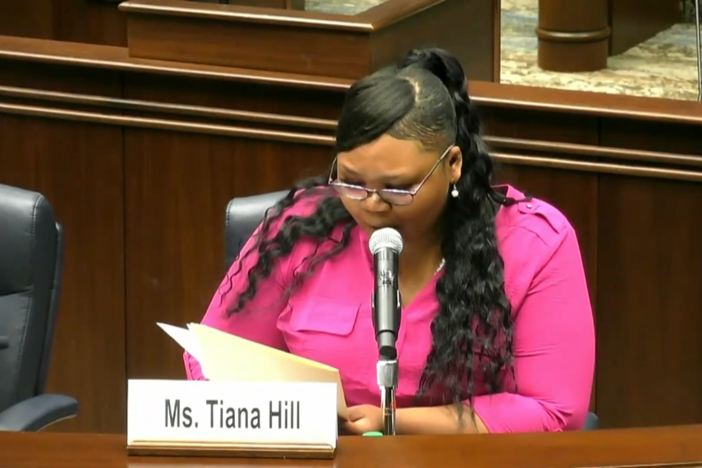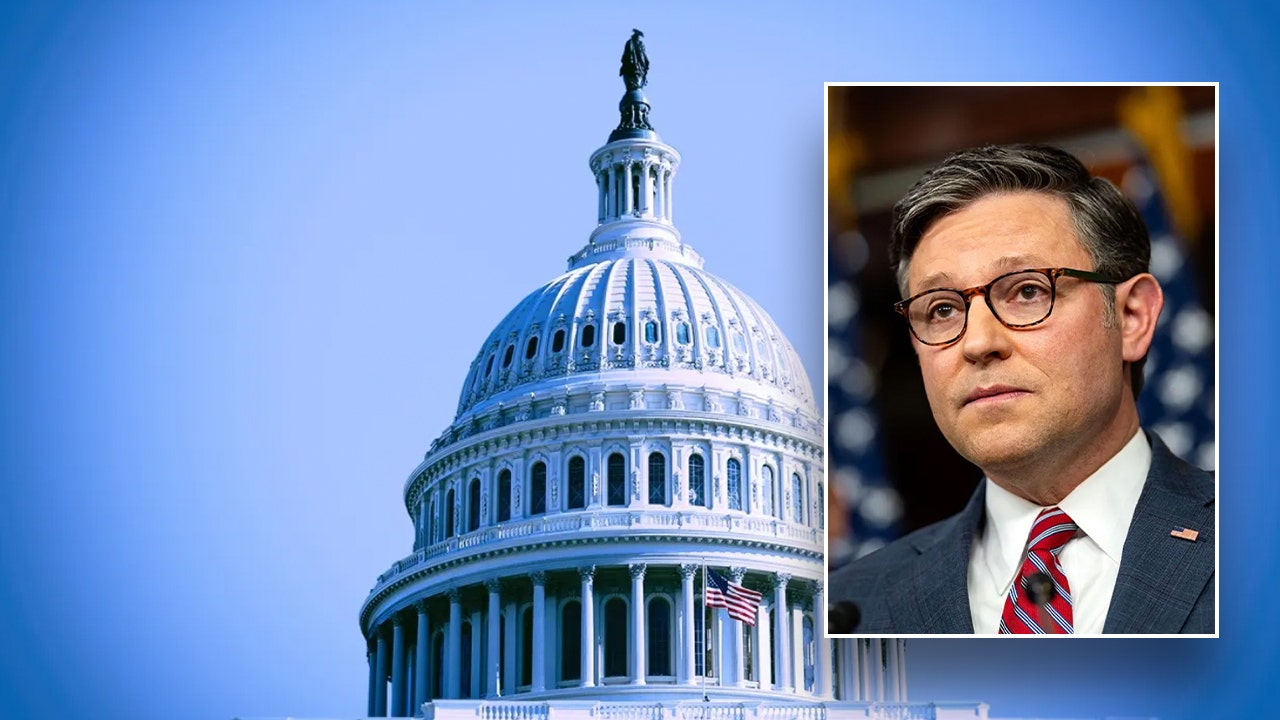Idaho
Idaho’s infant, mother death rate is rising, new report finds – Idaho Capital Sun

A new report released Tuesday found children and mothers are dying in Idaho at an increasing rate.
And reforming Medicaid coverage in the state could make a difference, it suggested.
Need to get in touch?
Have a news tip?
All key health indicators have worsened since last year, when Idaho Kids Covered released its first report on the health of Idaho children and mothers.
The mortality rate for mothers rose 121.5%, while the rate for children rose 18%, the report found. Idaho’s maternal mortality rate in 2021 was 40.1 deaths per 100,000 births, compared to 18.1 deaths per 100,000 births in 2019. Seventeen Idaho women died while pregnant or within one year of pregnancy in 2021. Idaho’s maternal mortality rate is below the national average, which has grown in recent years.
One hundred seventeen infants died in Idaho in 2021, compared to 97 in 2019, according to state records.
“Moms and children in Idaho are dying at an alarming rate,” said Ivy Smith, health policy associate at Idaho Kids Covered.
The report recommended overhauling Medicaid coverage for children and pregnant women by updating income cutoffs that haven’t been adjusted in decades and extending postpartum coverage to match what other states are doing.
The report painted a grim picture for Idaho mothers:
- One in 5 Idaho moms didn’t receive prenatal care in the first trimester of their pregnancy. Women of color got prenatal care even less.
- Three in 10 Idaho moms lacked health insurance before becoming pregnant.
- One in four Idaho moms had moderate to severe postpartum depression soon after birth — above the national average of 13%.
- One in five Idaho moms weren’t screened for depression during prenatal visits. More than half of pregnant women with depression never sought treatment.
And for Idaho children:
- More than one in 10 Idaho infants and toddlers did not see a doctor for a well-child exam in 2021.
- Eighty-five percent of Idaho kids aged 9-35 months didn’t get a recommended developmental screening.
Idaho Legislature disbanded maternal death review committee this year
The report comes months after Idaho lawmakers this June disbanded a committee to review maternal deaths, making Idaho the only state without such a committee. The committee previously found that most maternal deaths were preventable. The report called for the committee to be reinstated.
More than half of all pregnancy-related deaths in Idaho in 2021 happened between 43 days and a year after birth, the report said. In Idaho, pregnant women only receive Medicaid coverage up to 60 days after they give birth. That’s not the norm. Forty-six states offer postpartum coverage one year after birth. In all states except Idaho, pregnant women also have higher income eligibility cutoffs for Medicaid.
As US maternal mortality rates surge, Idaho abandons panel investigating pregnancy-related deaths
Early work to implement at least one of the report’s findings is already underway. The Department of Health and Welfare, Idaho’s largest government agency that runs Medicaid, requested funds in its budget request to implement 12 months postpartum Medicaid coverage, agency spokesperson AJ McWhorter told the Idaho Capital Sun.
Budget requests are only one step of the process. Idaho Gov. Brad Little still needs to draft his proposed budget. And the Idaho Legislature needs to appropriate the funds
The state health department also agreed that bringing back the maternal mortality committee would help.
“We agree that the reinstatement of the Maternal Mortality Review Committee would help in the identification of the causes (of) Idaho-specific maternal deaths and Idaho-specific recommendations that could be made to prevent future deaths and potential maternal morbidity due to pregnancy-related issues,” McWhorter said.
Idaho’s House Majority Leader Megan Blanksma told ProPublica earlier this year that she was working on bills to improve prenatal and postpartum care.
Why is Medicaid important for Idaho children and mothers?
Medicaid offers insurance to people with low incomes and disabilities. The program has wide-reaching impacts for mothers and children.
Nearly one-third of Idaho mothers were on Medicaid when they gave birth last year. Medicaid coverage is even higher for births in rural Idaho. For instance, 48% of births in Lemhi County involved mothers covered by Medicaid. And half of all people enrolled in Idaho Medicaid are children.
Children have higher income eligibility cutoffs, but the report says they don’t go far enough. Medicaid coverage should be revamped for children and pregnant women in a number of ways, the report recommended — including extending postpartum coverage and raising income eligibility cutoffs to get more in line with policies in other states.
About half of all Idahoans on Medicaid are children, the report said. And for patients who become pregnant, Medicaid is a crucial option because anyone can enroll any time, Smith said. That’s unlike private insurance, where people have a window of a few weeks each year to enroll.
“In Idaho right now, it is really hard to find quality and timely access to maternal health care and reproductive health care,” Smith said. “And with the statewide provider shortages, we must do all we can to ensure that Idaho moms have access to health care when they need it.”
Idaho, like other states, is re-evaluating the eligibility of all people on Medicaid for the first time since the pandemic, after federal protections barring eligibility reviews ended. Idaho officials have reportedly removed at least 121,000 people from Medicaid. But recently, thousands of Idahoans removed from Medicaid have gotten back on the program.
Seventy-thousand Idahoans removed from Medicaid this year were children, the report said. At least 51,000 kids were removed for not replying to the state’s requests for information, Smith said. That means state officials weren’t able to verify that they were ineligible for Medicaid. And that’s likely growing the number of Idaho children who are uninsured, Smith said, which was last recorded at 28,100.
Idaho children are eligible for Medicaid if their household income is at 190% of the federal poverty limit. But in more than one-third of states, families could earn 300% of the federal poverty limit — or a little more than one-third more — and children would still be eligible for Medicaid.
GET THE MORNING HEADLINES DELIVERED TO YOUR INBOX

Idaho
Obituary for Elvin Don Wheeler at Eckersell Funeral Home

Idaho
Idaho Division of Human Resources recommends 4% raises for state employees • Idaho Capital Sun

The Idaho Division of Human Resources is recommending the Idaho Legislature approve salary increases of 4% or $1.25 per hour for all permanent state employees.
Idaho Division of Human Resources Administrator Janelle White made the recommendation Friday during a meeting of the Idaho Legislature’s Change in Employee Compensation Committee meeting at the Idaho State Capitol in Boise.
White recommended the 4% salary increase, along with flexibility to distribute the funds for recruitment and retention. She also recommended increasing the salary structure midpoints for positions including public safety and nursing and recommended a 5.5% market-based increase for the salary structure for IT and engineering positions.
White said the Division of Human Resources issued the recommendation after receiving testimony from more than 1,700 state employees.
“Across all pay ranges, employees consistently cite rising cost of living as a major concern with current wages failing to keep pace,” White said. “They are concerned about pay compression, which is where new or less experienced employees earn as much or more than more tenured employees. Turnover and vacant positions are leading to increased workloads and burnout.”
Pay and benefits are important for several reasons. The state is one of the largest employers in Idaho, and these decisions directly affect thousands of Idaho families.
Need to get in touch?
Have a news tip?
Additionally, many state agencies struggle with retention because state employees in many fields make far less than their counterparts at private businesses and even at city and county jobs, White said. Last year’s turnover rate was 19.2%.
The situation is exacerbated because of inflation and surging increases in housing costs in Idaho.
“In the last decade, inflation has risen by more than 30% while the average base salary for state employees has only increased by 4.2%,” White said.
“As a result, employees are finding it harder to afford basic expenses such as housing, food, transportation, health care and other essential goods and services,” White added. “As Idahoans continue to rely on the contributions of these dedicated individuals, it is crucial to recognize and appreciate the invaluable role they play in our society and to ensure they can provide necessities for their families.”
Part-time Idaho legislators set to receive larger pay increase than state employees
Meanwhile, Idaho legislators are set to receive a much higher salary increase next year of 25%.
Idaho citizens committee approves legislative salary increases
Last month, a different committee – the Citizens Committee on Legislative Compensation – approved increasing the annual salary for Idaho legislators from $19,913 to $25,000, the Idaho Capital Sun previously reported. Rather than a full time legislative body, the Idaho Legislature is a part-time, seasonal legislature that generally meets for about 80 to 90 days each year.
Some Republican legislators have vowed to fight their pay raise.
Low pay for Idaho state employees can lead to high turnover
White told legislators there is a high cost to continually recruit and retrain new employees to replace the state employees who quit their jobs to make higher pay doing the same kind of work somewhere else.
State employees make an average of $20,000 less per year than they would doing the same job for a different employer, White said. Over the course of a 30-year career, that would cost an average state employee $600,000 in lost wages to work for the state.
“When employees leave the state, it has a profound and lasting impact on the bottom line and our ability to deliver services,” White said. “The hidden cost of turnover is frequently overlooked, yet its consequences are very costly to the state. A general rule of thumb is that it costs an organization one to three times an employee’s annual salary to replace them.”
Nothing was settled Friday.
The Change in Employee Compensation Committee is scheduled to meet again Jan. 7 and Jan. 9, and the Idaho Legislature will have the final say on pay and benefits for state employees during the upcoming 2025 legislative session.
YOU MAKE OUR WORK POSSIBLE.
Idaho
Pinecone Project aims to recover Idaho’s forests after Wapiti Fire • Idaho Capital Sun

One organization is aiming to help forest managers recover the trees lost in one of Idaho’s most devastating fires this summer.
On Nov. 3, the nonprofit Daughters of the American Revolution launched a fundraising campaign to raise money to help restore scorched south and central Idaho forests.
The Wapiti Fire, which began on July 24 by a lightning strike two miles southwest of Grandjean, spanned about 130,000 acres across the Boise National Forest, Sawtooth National Forest and the Salmon-Challis National Forest.
Coined the Pinecone Project, the funds raised will be used to hire professional tree climbers for the Sawtooth National Forest who will pick pinecones off trees to harvest mature seeds that will be used to grow and eventually replant trees back into the Sawtooth National Forest.
As of Monday, the Pinecone Project had raised a total of $11,500, including cash and check donations outside of the PayPal fundraiser, lead organizer Janice Beller said.
Beller is the Idaho state leader of the nonprofit. Like others in the organization, she is a descendant of someone who participated in the American Revolution. Conservation is important to the organization and important to her as a fifth generation Idahoan, she told the Idaho Capital Sun.
“Stanley is one of my favorite places in the world, and it has been in my family for years — literally generations,” she said. “When Stanley burned this summer, it just broke my heart and really had a kind of a profound impact on many members within Daughters of the American Revolution.”
‘We have a lot of need for seed’: Sawtooth forester says
Beller said a member of her leadership team reached out to a Stanley forest ranger to ask how they could help restore the forest. That’s when she learned about the shortage in seeds at Lucky Peak Nursery, located off Highway 21 outside of Boise.
Nelson Mills, the timber and silviculture program manager for the Sawtooth National Forest, said his biggest challenge is that forest staff hasn’t collected enough its seeds to replenish its seed bank at Lucky Peak Nursery.
Forest service staff right now have enough seeds to cover 50 to 80 acres of trees suitable for the Stanley area at its nursery, Mills said. However, that is not nearly enough to recover the forest from the Wapiti Fire.
Mills said that wildfires are a natural part of the ecosystem, but catastrophic wildfires like the Wapiti Fire will require artificial tree restoration. Of the 130,000 acres that were burned in the Wapiti Fire, 485 acres have been identified as requiring immediate reforestation need because the seed bed was completely burnt, Mills said. When a more formal assessment is done this winter, forest staff will likely find more acres in need of seedling planting, he said.
In addition to the seed shortage, harvesting pinecones is a complicated, risky and expensive process, Mills said.
The main way to collect pinecone seeds is by hiring professional tree climbers for $2,500 a day. Equipped with harnesses and spurred boots, they climb trees between 75 and 120 feet tall to collect pinecones at the perfect ripeness.
Timing is crucial, as ripeness varies by species and elevation, typically occurring between mid-August to mid-September, Mills said. An unripe pinecone won’t have a viable embryo, an overripe pinecone opens and releases its seeds, and pinecones that have fallen on the ground have been exposed to mold — making the seeds unsuitable for use, he said.
The pinecones are then transferred to Lucky Peak Nursery where they are tested, processed, cleaned and sown to make baby lodgepole pines, ponderosa pines and Douglas firs.
Mills said Project Pinecone creates flexibility for foresters because it is not congressionally appropriated. If it’s not a good pinecone producing year, he said foresters can wait until the next year, or look at other species in a different area.
“Everybody is stepping up through all phases of this reforestation issue to make a solution and grow forests back specifically in the Stanley basin that was affected by the Wapiti Fire,” Mills said. “It is an amazing collaborative effort, and I am just so thankful that people want to get together and grow a forest ecosystem.”
Fundraiser to last until spring 2025
Beller said the fundraiser will last until May, when she plans to hold a ceremony to present the funds to the Stanley community and forest officials. She said she is encouraging individuals to donate, as it is tax deductible, and people who donate more than $10 will receive a wooden magnet with the project’s logo.
The total goal of the project is to raise $15,000, which would pay for six days of pinecone picking.
The fundraiser is partnering with Boise Cascade, which committed to a day’s worth of pinecone picking to the project.
“Boise Cascade’s roots run deep in the state of Idaho, and we are honored to contribute to this incredible project to help restore some of Idaho’s most cherished forest lands that were burned during the brutal fire season of summer 2024,” Boise Cascade Vice President of Human Resources and contributions committee chair Angella Broesch, told the Sun. “As one of the largest producers of wood products in North America and a leading wholesale distributor of building products in the U.S., our company is committed to contributing to responsible forestry practices and protecting our environment.”
Having surpassed the halfway point of its goal, Beller said the successful donations show how much people from Idaho and outside of Idaho care about the Stanley area.
“We’ve heard so many people say that it’s truly the heart of Idaho, and it means a great deal to them and their families,” Beller said. “So to see everybody come together and contribute even just a little to bring it back is very humbling.”
GET THE MORNING HEADLINES.
-

 Politics1 week ago
Politics1 week agoCanadian premier threatens to cut off energy imports to US if Trump imposes tariff on country
-
/cdn.vox-cdn.com/uploads/chorus_asset/file/25782636/247422_ChatGPT_anniversary_CVirginia.jpg)
/cdn.vox-cdn.com/uploads/chorus_asset/file/25782636/247422_ChatGPT_anniversary_CVirginia.jpg) Technology1 week ago
Technology1 week agoInside the launch — and future — of ChatGPT
-
/cdn.vox-cdn.com/uploads/chorus_asset/file/25789444/1258459915.jpg)
/cdn.vox-cdn.com/uploads/chorus_asset/file/25789444/1258459915.jpg) Technology1 week ago
Technology1 week agoOpenAI cofounder Ilya Sutskever says the way AI is built is about to change
-

 Politics1 week ago
Politics1 week agoU.S. Supreme Court will decide if oil industry may sue to block California's zero-emissions goal
-
/cdn.vox-cdn.com/uploads/chorus_asset/file/25546252/STK169_Mark_Zuckerburg_CVIRGINIA_D.jpg)
/cdn.vox-cdn.com/uploads/chorus_asset/file/25546252/STK169_Mark_Zuckerburg_CVIRGINIA_D.jpg) Technology1 week ago
Technology1 week agoMeta asks the US government to block OpenAI’s switch to a for-profit
-

 Politics1 week ago
Politics1 week agoConservative group debuts major ad buy in key senators' states as 'soft appeal' for Hegseth, Gabbard, Patel
-

 Business5 days ago
Business5 days agoFreddie Freeman's World Series walk-off grand slam baseball sells at auction for $1.56 million
-
/cdn.vox-cdn.com/uploads/chorus_asset/file/23951353/STK043_VRG_Illo_N_Barclay_3_Meta.jpg)
/cdn.vox-cdn.com/uploads/chorus_asset/file/23951353/STK043_VRG_Illo_N_Barclay_3_Meta.jpg) Technology5 days ago
Technology5 days agoMeta’s Instagram boss: who posted something matters more in the AI age




















